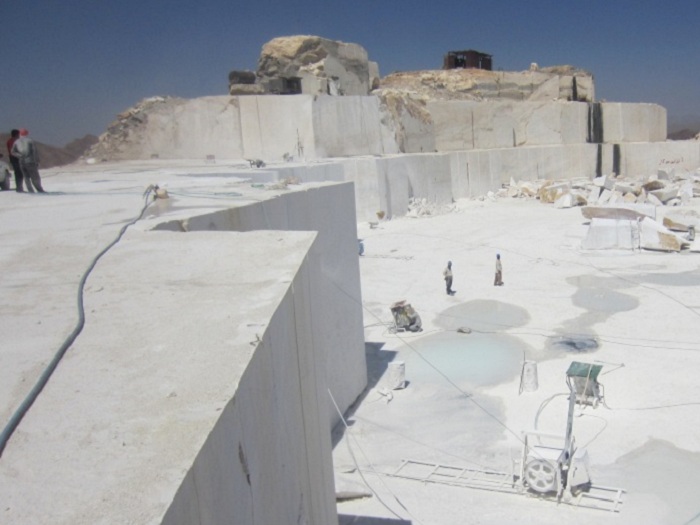Carcass rock accounts for twenty-five percent of all mines

The share of carcasses in the country's total mines is estimated at twenty-five percent, which is the highest. Also, more than 30% of active mines are allocated to this mineral.
According to the International Exhibition of Iranian Stone, carcass stone is a stone that can not be used as a decorative stone and can be used to build walls and use in the construction of stairs and.. Also in carcass stone factories, carcass stone is used to produce stone powder.
The total carcass mines of the country are registered in two thousand five hundred and eighty-seven mines, of which one thousand eight hundred and eighty-one active mines, five hundred and eighty inactive mines and one hundred and twenty-six mines are being equipped.
The total carcass mines of the country have a share of twenty-four and six percent of the total, and of the total of six thousand and one hundred active mines have a share of more than thirty percent.
Generally, building stones that are used in the form of mallen (cut and hammered stone) or irregular shapes for the foundation, wall and base of the bridge are in the row of carcass stone, in other words, stone mines that do not cut slate and stone are used as carcass stone. And are exploited.
For most building stones, a compressive strength of about 400 kg is sufficient, but the compressive strength of the carcass stone must be greater than this amount.
Foundation and wall stones, stone wall stones, stones that can be used in road construction and… are the main uses of carcass stone, each of which has characteristics such as texture type, specific gravity, compressive strength.
Previous statistics show that the annual extraction of carcass stones in the country is ninety-eight million six hundred and seventy thousand two hundred and two tons.
Carcass stone mines are a function of proximity to the city or place of consumption and ease of extraction and layer thickness so that suitable and portable parts can be easily extracted from it.
Also, the amount of carcass stone storage is twelve billion, four hundred and ninety-six million, eight hundred and twenty-two thousand tons, which is a probable amount.
Carcasses are less resistant than pure limestones and soon wear out, producing large amounts of carcasses during extraction.
Uses of this stone in industry include making stone utensils, carpets, stone carvings and stone pots, artefacts, sculptures, memorials, stone powder and crushed stone powder and crushed stone for the production of carbon dioxide, rice husking, pulp, soap making and glass industry. .
Also, mosaic stone, artificial stone, use as a filler are used as a filler in the preparation of asphalt, chemical fertilizers, insecticides, paint, rubber, plastic and carcass stone of construction materials.
Employment status statistics show that about twenty-one thousand people are directly working in the mines and production units related to this sector.
Carcass stone is used in chemical, cosmetic, paper production, paving or other construction materials such as cement, wall filling, mortar, concrete mortar, asphalt, sand, which is very effective and useful in the strength and durability of carcass stone building. be.
Fifty-nine industries can use this material as a raw material, and about ten percent of the total amount of available carcasses is consumed, and a large volume of travertine ore carcass remains unused to solve this problem. The cement plant in the area seems appropriate.
Studies show that out of a total of two thousand five hundred and eighty-seven carcasses in the country, two thousand four hundred and twenty-three mines are owned by the private sector, one hundred and sixty-two mines in the field of cooperative activity and two mines are managed by the government.










